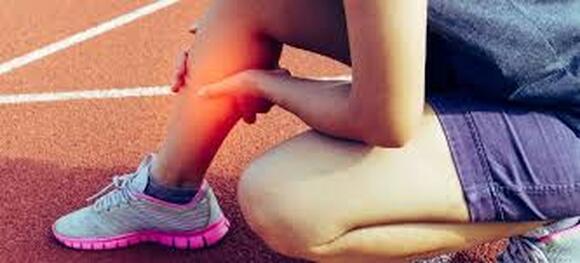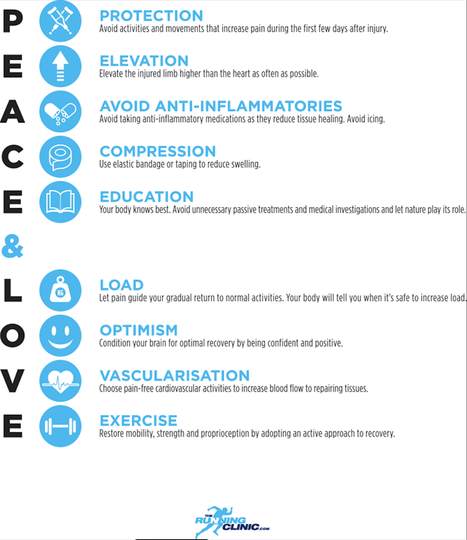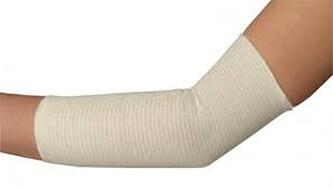|
Injuries are a very common occurrence in sport or the workplace and there are a multitude of factors that play a role for an injury to occur. Injuries can be niggling and can threaten to derail your sports season. Injuries also play a role when it comes to limiting you at work and your everyday life and therefore I feel injuries are very important to manage correctly. Below will outline what the most recent and up to date research says about how you should go about your rehabilitation so you can recover in the quickest time possible with the best outcomes possible. Have you heard of RICE ( Rest, Ice, Compression and Elevation)? Or what about POLICE ( Protection, Optimal Loading, Ice, Compression, Elevation)? These 2 acronyms have been used throughout the years as ways to help people manage injuries and at the time were based on the latest research. These practices are still very commonly used when someone suffers an injury. But is this what the latest research says? Are we providing the best management for our injuries? In 2019 new research emerged and with it, a new acronym for us to live by when managing injuries, PEACE & LOVE. This new acronym helps us manage directly after an injury has occurred, but also gives us a framework for management to get back to pre-injury capacity. What does this mean for us who are trying to manage an injury? Well I will go through step by step. The word PEACE helps us understand what the necessary approach is directly after an injury has occurred. P for protection It is recommended to minimise movement and load on an injury for the first 1-3 days to reduce the risk of aggravating the injury, minimise bleeding to the area and prevent distension to the injured muscle. E for elevate Elevate the limb or body part higher than the heart to be able to remove any unwanted fluid around the injury. A for avoid anti-inflammatories The body’s way of repairing an injury is through inflammation. Inflammation carries all the right things for your body to go through the process of repairing itself. Therefore taking anti-inflammatories which are designed to stop this process could affect long term healing. What about ICE? It has been a stalwart in the injury management space for many years now but according to the most recent research it is unknown whether ice helps the healing process of an injury. It is believed ice reduces inflammation which we know is very beneficial and necessary to healing. In fact the researcher, by the name of Dr Gabe Mirkin, who invented the term RICE back in 1978, has retracted his research and now has the view that ice and rest may actually delay healing not help it. Ice is thought to have a pain relieving effect on an injury and therefore does have a role in injury management but not as initially first thought. C for compression Compressing an injury with external pressure like a bandage or compression garments you can buy these days assists to reduce swelling and muscle bleeding E for education Correct education from a health professional helps to avoid overtreatment and should give you the confidence in your body’s healing mechanism. You should be trying to stay away from passive treatments especially in the long term and try to use more active approaches to management. The mentality “I need fixing” is detrimental to your recovery. If you don't understand your specific injury or don't know how to rehabilitate it, speak to a health professional for help and education on correct treatment and load management for a full recovery. & After the initial management of an injury, all it needs is some LOVE. L for load Load should be added early on in your rehabilitation and you should try and resume your normal activities as soon as you feel comfortable doing so. Loading that does not exacerbate pain assists repair and recovery of your muscles, allowing you to regain the capacity and strength you previously had. O for optimism Psychological factors play a larger role in a person's recovery than people release. Factors such as catastrophizing your injury and fear or anxiety over your injury can prevent optimal outcomes. It is believed that psychological factors may drive the variation you see in certain injuries, more so than the injury itself. Stay positive, be optimistic and believe in your body’s healing process. V for vascularisation Aerobic exercise is a fundamental aspect of any injury rehabilitation process as it promotes blood flow to the injured area and is proven to improve mood, psychological well being and motivation. So find a pain free aerobic exercise that you enjoy and begin with that. E for exercise
Exercise is thought to be the gold standard in terms of treatment for injuries and research has demonstrated positive outcomes for all types of injuries. Exercise has many different mechanisms of improving the capacity of an injured body part or an injured person and it is important to continue to exercise any way possible through an injury period. There is plenty to understand and to cover when you get an acute injury however remember to use the acronym PEACE for directly after an injury has occurred and use love for the rehabilitation process. Bottom line is you want to stay as active as you can and in the beginning phase of an injury be guided by your pain to what you can and can't do. Loading the injury to a tolerable level is only helping healing, not hindering it. Izaac Boylan Accredited exercise physiologist
0 Comments
Your comment will be posted after it is approved.
Leave a Reply. |
AuthorSLisa Parkinson Archives
July 2024
Categories
All
|





 RSS Feed
RSS Feed